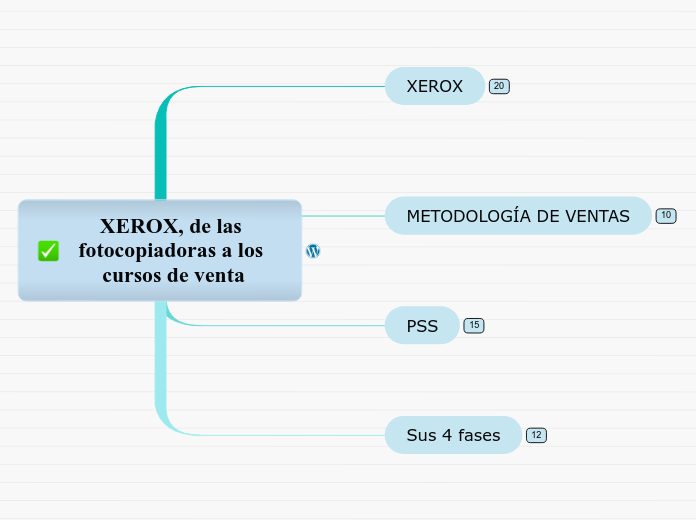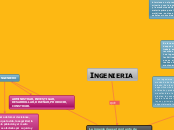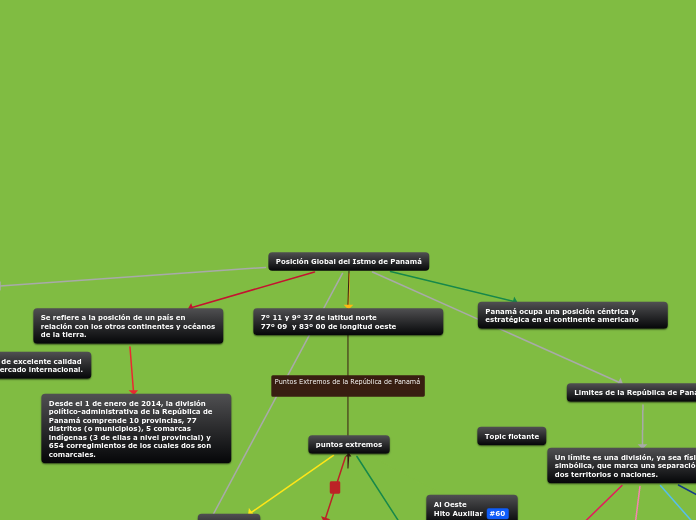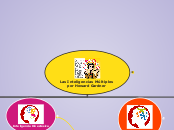XEROX, de las fotocopiadoras a los cursos de venta
To name your story, you have to think about the overall message and what you want your audience to understand from the story. Also, make it relevant and easy to remember.
Sus 4 fases
Closing
La fase de cierre en la que se definen los siguientes pasos. El cliente está de acuerdo en los beneficios presentados y quiere seguir adelante con la propuesta
Supporting
Ahora pasamos a demostrar al cliente como podemos ayudarle a satisfacer su necesidad
Probing
Esta es la parte de exploración en la que intentamos entender de verdad la necesidad del cliente
Opening
En esta fase de apertura se establece la agenda de la reunión
PSS
The ending of a story is essential. We all know that if the ending is weak, what happened before loses its importance. So make it unpredictable, but fair. A resolved ending answers all the questions and ties up any loose threads from the plot.
La metodología pone mucho foco en las preguntas
Se enseñaba al vendedor a dirigir al comprador a través de las preguntas hasta la respuesta deseada
Y por eso las primeras versiones eran muy manipuladoras
PSS pone también énfasis en algo que hasta entonces no era obvio
las relaciones de confianza a largo plazo ayudaban en las ventas
la relación a largo plazo
La base de la metodología
This is the closure section of the story.
See examples of possible outcomes below:
- all problems have been solved
- it's clear how each one of your characters ends up
- your main character is transformed by the challenge
introdujo el concepto de un proceso que acabe con un win-win para vendedor y comprador
es que el vendedor debe entender las necesidades desde el punto de vista del cliente
Try answering these questions to come up with a closure:
- Have all the problems been solved?
- Is there a clear picture of what happens with each character in the story?
- Has the challenge transformed your main character?
- How do the characters feel in the end?
Fue la primera metodología desarrollada siguiendo un proceso científico
This is the moment when the main character surpasses the last obstacle and finally faces their greatest challenge.
The climax usually follows one of these patterns:
- realization
- resolution
- choice
Type in your answer.
ayudaba a desarrollar las habilidades necesarias para ser un buen vendedor
observación de los mejores vendedores y de intentar sacar conclusiones que ayudaran a otros a replicar ese éxito
METODOLOGÍA DE VENTAS
The middle of the story is where you add layers of complications that will lead to the end. Reveal more about the character's journey. Did their personality go through changes? How did they overcome the challenges? And as you build up the story’s central conflict, make it more personal to that character. Also, from the middle act, you have to lead into the final act.
La metodología pasó a llamarse Professional Selling Skills (PSS)
Your character(s) need(s) motivation in order to solve the challenge(s).
Después de PSS, no hay nada más que iteraciones con el objetivo de vender nuevas formaciones de venta, no iteraciones que busquen vender más
Secondary characters might also have motives that lead them to cross paths with the main character or which might trigger them to help the main character.
Sin duda el programa de formación más exitoso de todos los tiempos
Why does your character need to confront this challenge? What does he/she expect to accomplish by solving it?
See a few examples:
- will marry in 3 days
- can fix the mistakes of the past
Motivation
Don Hammalian, junto a Neil Rackham
Each story has a main character and that character usually needs to solve a problem or challenge. The character's challenge is the one that creates tension throughout the story.
Finalmente en 1972 hizo un spin off y creó Xerox Learning Systems (XLS)
La metodología fue un éxito, tanto, que Xerox empezó a comercializar la formación a otras empresas
Type in any other challenges which other characters in the story need to face.
Other challenges
Lideraron este equipo dentro de Xerox y desarrollaron la metodología que acabó llamándose Needs Satisfaction Selling.
In most stories, there are 3 challenges. The number 3 is a mystical number symbolizing completeness. Try to come up with interesting challenges with which your character needs to struggle.
See a few examples below:
- turns into a werewolf at night
- is sent back in time
Challenges
XEROX
In the beginning of the story (or the exposition), you will need to introduce the setting and characters. You might also want to introduce the main conflict. This part of the story is important because it gives the reader necessary background information and maybe even a first insight into a character’s personality.
Se lanzó al desarrollo de tecnología digital
The setting (time & place) of a story can change throughout the plot.
Viendo el éxito de IBM
Sensory details include sight, sound, touch, smell, and taste. These details are important because they create depth in your setting.
See a few examples below:
- the smell of fresh bread
- the scent of freshly cut grass
- rain falling onto the windshield etc.
Xerox decidió invertir 10 millones de dolares en el desarrollo de una metodología de ventas
Efectividad de su fuerza comercial
Apple y Microsoft
The weather is an important element in your story because it can highly influence the ambiance and the mood of the characters.
Sabemos que tecnología sin modelo de negocio no vale para nada
Decide if you want to include an element of nature in your story. For example, a rainbow can be a very nice choice for a happy ending. The mist in a story can represent mystery and secrets. A thunder can appear in the background at the moment when the 'bad guy' of the story makes its appearance, etc.
Se beneficiaron de la incapacidad de Xerox para comercializar esos inventos
Does your story include catastrophic weather? See a few suggestions below or add your own:
- hurricane, earthquake, storm, etc
El ratón, los interfaces gráficos, ethernet y las impresoras láser entre otros grandes avances tecnológicos.
The time of the story can also change. It can describe the event of a single day or can include an entire year's plot. Anyway, don't forget to mention it.
Time of plot
Su centro de desarrollo en Palo Alto
Your story can take place wherever your imagination will take you to.
For example: in an elevator, in an enchanted forest, etc. Don't forget to give details of the environment each time the setting changes, otherwise, the story can be confusing. Also, mention the seasons as each of them has unique weather and events.
Location
1968
Characters are essential to a good story. Usually, the protagonist(s) is/are the most affected by the plot. Introduce a character by focusing on their actions, interests, and occupation, as the physical appearance doesn't make a difference in most cases.
Se le empezaban a acabar las patentes
Type in the name of your character.
Xerox busco formas de contraatacar
Add other qualities/attributes of the character.
IBM aprovecho la caducidad de las patentes, preparo productos que iban directamente contra la línea de flotación de Xerox
What is your character's main goal?
fight Evilfind lovedefeat his/her enemyrule the worldmake friendstime travelmake an awesome discoveryOther
Su competencia IBM
Which traits best describe the character's personality? Choose more if necessary:
introvertedloyalkindindependentquick-thinkingadventuresomeidealisticsweet-naturedcalmrisk-takercreativewittystrictfussyweirdclumsyharshaggressivecarelessclingingcowardlycrueldeceitfulimpulsiveOther
Gracias a las patentes construyo su imperio de fotocopiadoras y demás productos
Choose the type of your chacter:
Protagonist (main character)Antagonist (main character's opponent)Flat (stereotypical character)Round (his/ her personality develops throughout the story)Static (doesn't evolve as a person throughout the story)Dynamic (dramatical change in personality)Confidant (the main character trusts him/ her)Foil (contrasting character who enhances the personality of another character)Other










